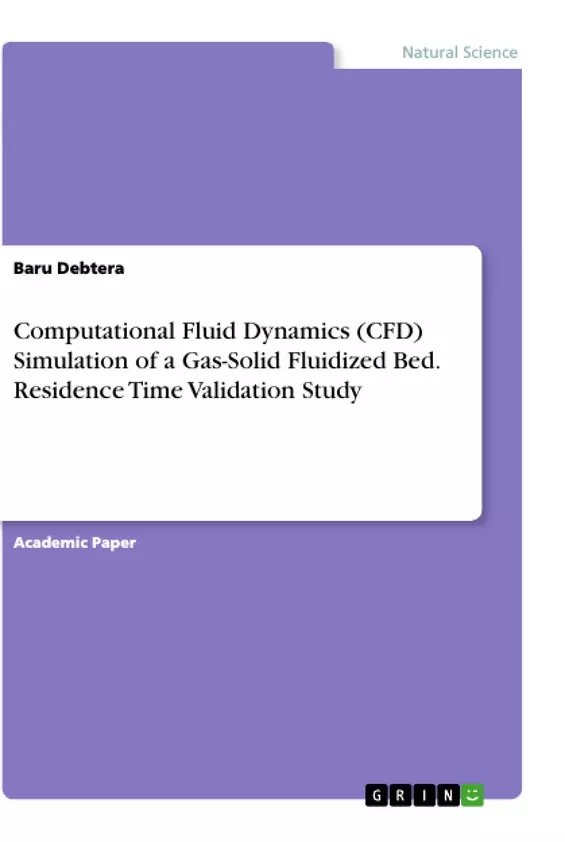In this study, numerical simulations of a gas-solid fluidized bed reactor involving a two-fluid Eulerian multiphase model and incorporating the Kinetic Theory of Granular Flow (KTGF) for the solids phase have been performed using a commercial Computational Fluid Dynamics (CFD) software. The fluidized bed setup consists of 1,5 m height and 0,2 m diameter in which a series of experiments were performed using Helium tracer to determine the Residence Time Distribution (RTD) at various normalized velocities i.e., with different degrees of gas-solids mixing. Both 2D and 3D simulations of the fluidized bed reactor are performed. The main purpose of this study is to understand the hydrodynamic behavior of a gas-solid fluidized bed reactor through a framework of Eulerian multiphase model and to analyze hydrodynamic behavior of the gas-solids mixing.
Inhaltsverzeichnis (Table of Contents)
- INTRODUCTION
- COMPUTATIONAL FLUID DYNAMICS (CFD) MODEL
- Geometry and mesh
Zielsetzung und Themenschwerpunkte (Objectives and Key Themes)
This study utilizes Computational Fluid Dynamics (CFD) simulations to investigate the hydrodynamic behavior of a gas-solid fluidized bed reactor. The primary objective is to validate the CFD model using experimental data on residence time distribution (RTD) and analyze the mixing behavior of the gas and solid phases.
- Hydrodynamic behavior of a gas-solid fluidized bed reactor
- Validation of CFD models using experimental RTD data
- Analysis of gas-solids mixing in the fluidized bed
- Understanding the impact of fluidization velocity on mixing behavior
- Application of CFD to predict fluidized bed reactor performance
Zusammenfassung der Kapitel (Chapter Summaries)
- INTRODUCTION: This chapter introduces fluidization, its applications, and the significance of understanding fluidized bed reactor behavior. It highlights the advantages of fluidized beds in various industrial processes and mentions the role of CFD in analyzing complex phenomena related to gas-solid interactions.
- COMPUTATIONAL FLUID DYNAMICS (CFD) MODEL: This section focuses on the CFD model employed for simulating the gas-solid fluidized bed reactor. It describes the geometry of the reactor, the mesh used for the simulations, and the governing equations (RANS) employed in the model. The chapter also includes a diagram depicting the 2D and 3D mesh of the fluidized bed.
Schlüsselwörter (Keywords)
This study explores the application of Computational Fluid Dynamics (CFD) to simulate and analyze the hydrodynamic behavior of a gas-solid fluidized bed reactor. Key concepts include: fluidized bed, residence time distribution (RTD), gas-solids mixing, turbulence, Eulerian multiphase model, Kinetic Theory of Granular Flow (KTGF), and validation of CFD models through experimental data.
- Quote paper
- Baru Debtera (Author), 2021, Computational Fluid Dynamics (CFD) Simulation of a Gas-Solid Fluidized Bed. Residence Time Validation Study, Munich, GRIN Verlag, https://www.hausarbeiten.de/document/1151429


